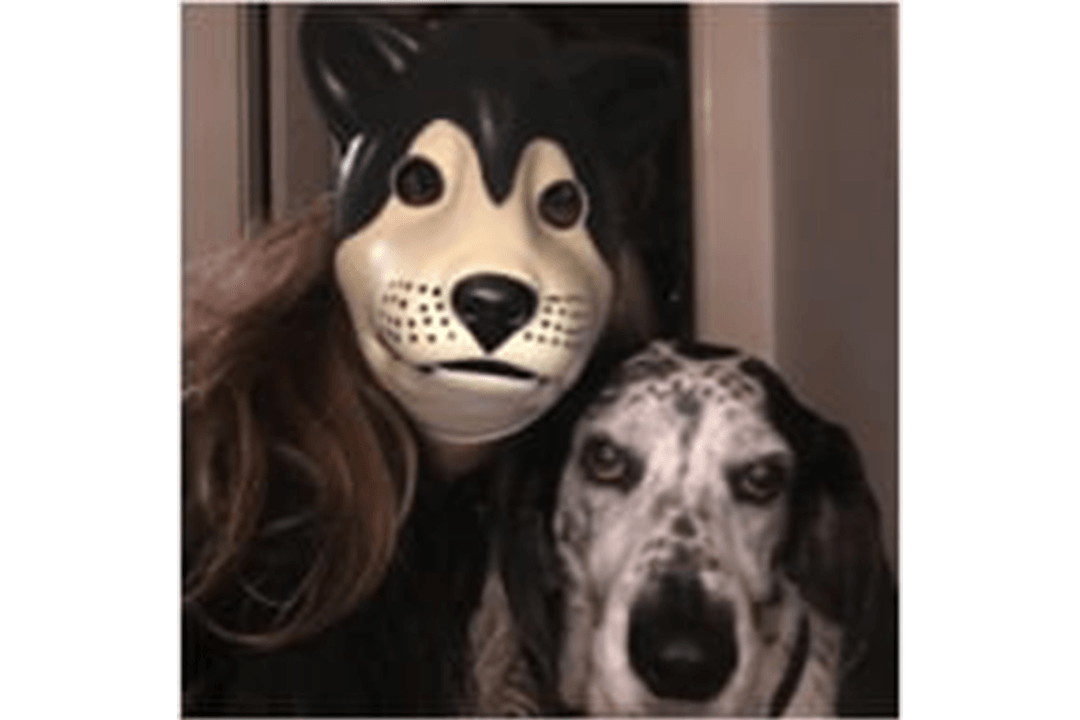The coyote came to me in a box—just her head—wrapped with care by a hunter on the other side of the country. He found her wandering Lake County Oregon before the winter, perhaps scouring the bitter sage for rabbits. As my scalpel finds a hold in the small space of her forehead between the two feather soft ears, I wonder how they must have twitched when she heard the small click of his rifle, but by then it was too late—the bullet was already splitting atoms of evening air destined for her heart—a muscle with sister cells in the musculature of face.
I slide the with knife with precision down the crest of her narrow snout, and the fascia pull away with tenderness, a slow unzipping of fur and flesh that seem to will me to see, or maybe it is that is how I want to imagine it to be. With lash-laden lids removed, it is in death that the coyote’s eyes see no threat to staring into mine.
I am not great with names. I often struggle to recall even favorite authors and artists – I can picture their work, hear their words, but when someone asks, “who wrote that?” there is often a momentary blank. Then of course there is the recurrent awkward panic when someone I’ve met multiple times in social situations approaches me at a gathering and I think “shit, shit, shit I know this person…” I try to do the trick where I find a friend to introduce them to so I can say, “oh this is my friend Soandso,” and then the nameforgotten says to Soandso, “hi, I’m Suchandsuch”. RIGHT. Suchandsuch.
I know I’m not the only one who struggles with this. Sure, more dedicated people do the thing where they attach a descriptor or fact about the person to the name to ensure memory. Yet when our society appears to be so obsessed with labels and enrapt in social networks, connections, and nepotism, doesn’t it seem peculiar that so many of us lack “hardwiring” for lexical cues?
The answer is in the face—specifically a region of the brain called the fusiform face area (FFA), which is responsible for deciding what features in which combinations constitute a pattern worth processing as a face, a fellow, a conspecific. Most importantly the FFA assess one verses an other.
For a long time scientists and philosophers have thought that perhaps this ability to identify, catalog, and recall faces—along with our capacity for language—is uniquely human, setting us apart from other animals because of our so-called higher cognitive functioning. But this may very well be wrong.
Other animals can and do communicate—and some using linguistic tools—not only with each other, but with humans as well. Within the animal kingdom, communications can be divided into four main mechanistic types: 1) Facial recognition and expression; 2) Gesture, including pointing; 3) Multi-step movement combinations (e.g. mating dances, play bows accompanied by tail wagging); and 4) Vocalization via speaking, clicks, chirps, barks, calls, songs, grunts, growls, etc. And when it comes to facial recognition and expression, we know that some corvids, sheep and many primates can and do recognize faces, which tells us that this skill may have evolved independently across multiple lineages.
We can look to our ‘best friends’ in evolution, canines, to consider this. A 2016 fMRI study (Cuaya, Hernández-Pérez R, and Concha L., 2016) established the temporal cortex of the dog brain as a specific area for processing human faces—the same region where the FFA is located in humans. While undergoing fMRI tests, canine subjects were presented with images of unfamiliar faces and everyday objects. BOLD indices (measures of blood-oxygen levels in different parts of the brain taken during fMRI tests) showed responses mainly in the bilateral temporal cortex for human faces, in comparison to everyday objects. Notably, this similarity of temporal cortex activation across species could indicate a visual pathway for facial processing that has been relatively well preserved, evolutionarily speaking. If neural pathways are contributing to interpretation of various expressions, they must also then be contributing to cognition—and display—of the appropriate response expressions.
And in fact, according to a study by Kaminski, et al. (2017), the quantity and variety of facial expressions produced by domestic dogs increases in response to attentive humans vs. non-attentive humans, with attention defined as the human experimenter facing toward the dog and making eye contact with no verbal or vocal signaling or cues. In other words, dogs have adapted a suite of facial expressions in order to communicate with those on whom they are now largely dependent – humans.
We can trace changes in facial muscle morphology among primates, and the especially striking differentiation of human facial muscles aids the increasing demand for visual communication of emotions. Could this potentially also be happening in dogs as they communicate more directly with us and less with each other? In which case, might domestic dogs have more complex facial musculature compared to their wild relatives? A fascination with this question is why and how I found myself dissecting a coyote.
Maybe it doesn’t really matter that I’m not great with names. Perhaps labels and names and categories are not the key to surviving and thriving in a human society; perhaps it is the ability to read—and respond to—what is said without words.


